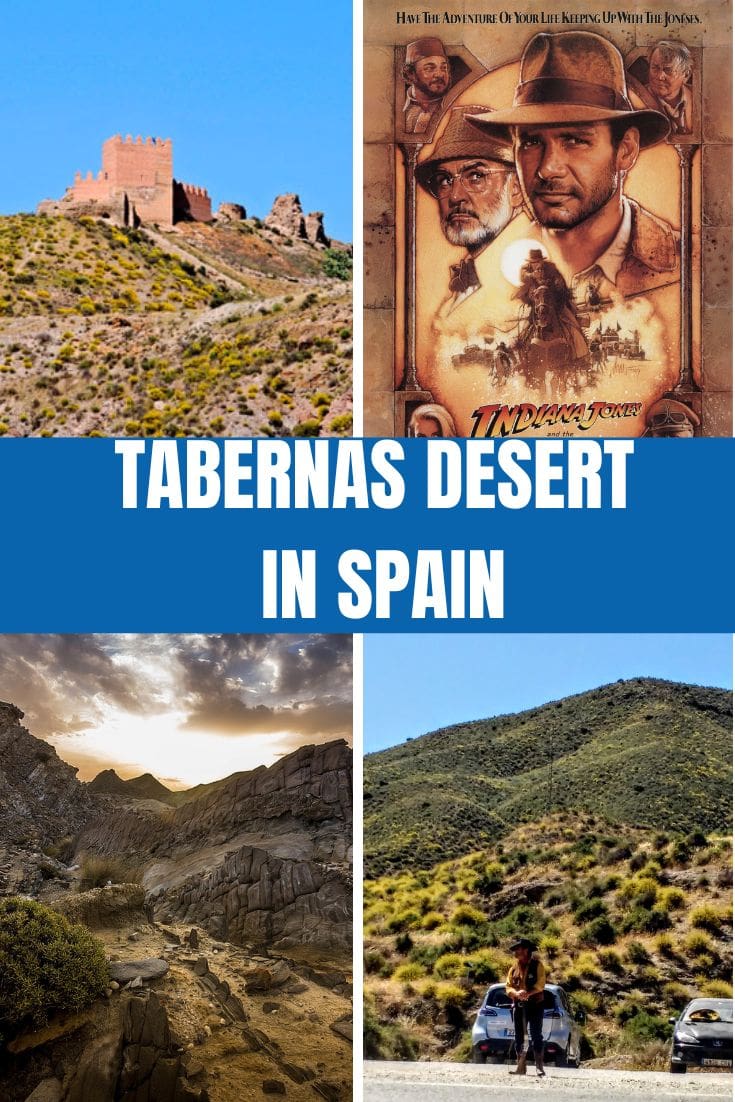Visiting the Desierto de Tabernas (Tabernas Desert) Almeria Spain
The Tabernas Desert in Spain or as it is known in Spanish Desierto de Tabernas is a dry arid area in Spain’s Almeria Province. Only 19 miles north of the capital Almeria and it is Europes only desert. It is an incredible nature reserve of over 110 square miles. While there are other barren areas those semi-arid areas are not true European deserts.
The Tabernas Desert is the only real inland desert in Europe. The sun shines here for over 3000 hours a year and rain is virtually unheard of. Tabernas is within the Andalucia area of southern Spain and it makes for an interesting place to visit. In fact so much so that the Tabernas Desert has been used by many a filmmaker to represent the southern deserts of the USA in the famous “spaghetti westerns” of Clint Eastwood and other cowboy heroes.
How to get to the Tabernas Desert?
This 280 square kilometres natural area is situated approximately 30 kilometres north of Almería and includes the municipalities of Tabernas, Gador, Gérgal, Santa Cruz and Alboloduy.

From Mojácar take the road to Almería (A-7/ E-15 in the direction of Níjar and Almería). Then leave the motorway in the direction of Sorbas and Tabernas. After crossing through Sorbas via its main road, you will begin to see signs for the city of Tabernas and the desert carrying on along the N-340A road.

Finding unique places to visit in Spain
Guided excursions in the Tabernas desert
The Ramblas and ravines of the desert can be seen either on foot, by horseback with a guided tour or even rent a 4×4 for touring the area.
Malcaminos, is a specialist tour guide in the area, can provide any of these options. You can take a guided tour of the movie location sites, hire a horse or camel and trek the desert, and even grab that 4×4 you’ve always wanted to drive and set out to explore.
How to spend a fabulous holiday on the Costa Almeria
Walking and hiking the Tabernas desert
You should note that some areas in the interior of the Tabernas Desert are prohibited for vehicles. This is, after all, a nature reserve. There are well-signposted walking and hiking trails but it is advised that you don’t venture beyond these trails.
One of the most popular hiking routes in Almería is known as the desert trail route. It consists of an itinerary of 14 kilometres with a height of 150 metres. The trail also has a reduced version of 9 kilometres. The estimated time for both versions is 5 and 3 hours respectively.

It is made up of an interesting combination of watercourses and footpaths which will give you the opportunity to enjoy the most popular spots of this spectacular Andalusian natural landscape of unquestionable scenic and geological interest.
Another great option if you like hiking is the wild west route. It is a 22-kilometre route that although is of moderate durability, will prove to be very enjoyable as you will pass through the most cinematographic areas of the desert. Places that were used to set great productions such as Lawrence of Arabia and The Cóndor will catch your eye and guarantee you have a great time.
Tabernas desert animals
The Tabernas Desert is an Area of Special Protection for birds and the ravines and canyons are a fragile ecological environment where rare birds such as the Trumpeter Finch and the European Roller breed. Other bird species that can be seen for those with an interest in bird watching in the Tabernas Desert include Bee-eaters, Warblers, Crag Martins and Dupont’s lark. You will also spot birds of prey swooping down from the mountains including Peregrine falcons and the rare Bonelli’s Eagle looking for a meal.
Although the environment of a desert appears to be hostile on the surface there are many species of reptiles, animals and rodents that live there. The rare Spanish Hedgehog makes it home here in the desert as well.
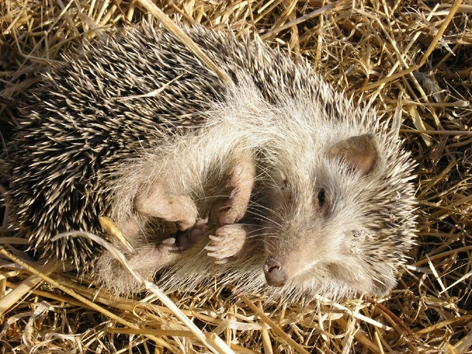
Tips for touring the Tabernas Desert
- Not to point out the obvious but a sun hat, sunscreen and lots of water it’s a desert after all
- Good hiking or walking shoes the terrain can be quite rugged
- Make sure your phone is charged but do remember some areas reception isn’t going to happen
- Leave a note in your car if you are travelling alone with your cell phone number on it and your planned route.
- Make sure no valuables are left in the car and do tell someone where you are going.
Tabernas Desert, a Hollywood Location
In 1989, the Andalusian Regional Government issued a decree that the landscapes around Nijar and Tabernas should be protected for the use of the film industry.

The Tabernas Desert has been a film location for Indiana Jones, Exodus, Lawrence of Arabia, Once Upon a Time in the West and more recently Game of Thrones filmed here.
The famous spaghetti westerns of the 60s and 70s were almost exclusively filmed here and remnants of those days remain in place as tourist attractions.
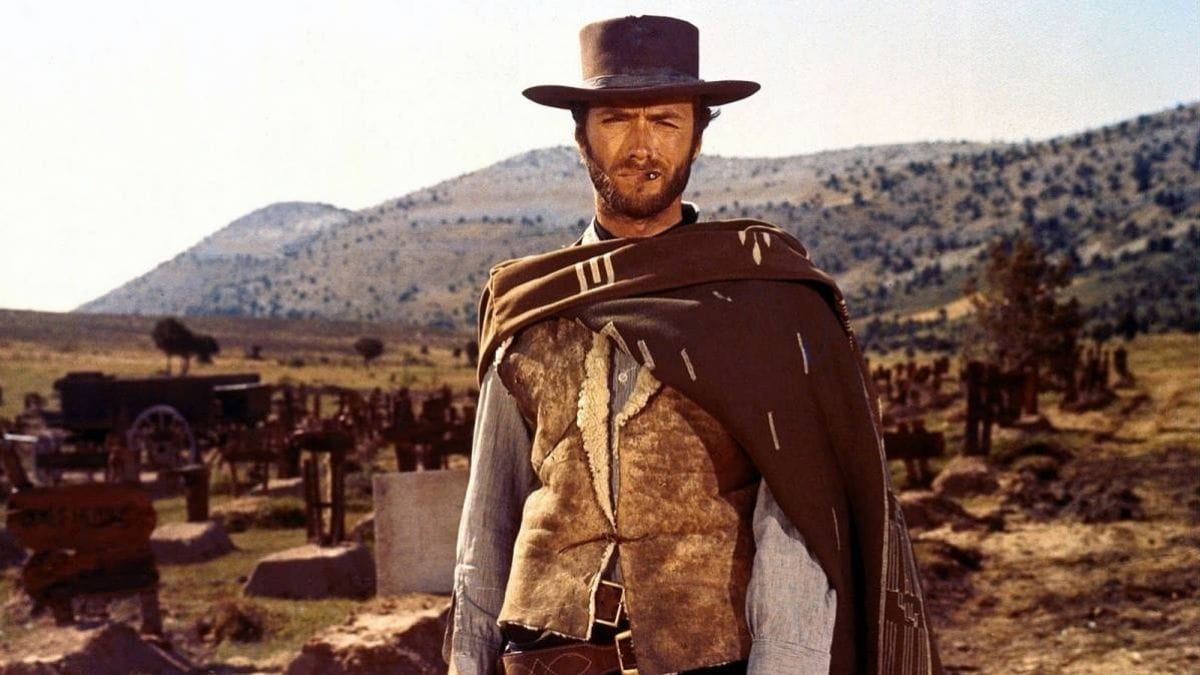
Some of the greatest movie legends of all time have been in the Tabernas Desert filming, Charles Bronson, Clint Eastwood, Steve McQueen, Yul Brynner, Sean Connery, Gregory Peck, Harrison Ford and Brigitte Bardot to name drop a few famous and infamous movie stars.

Sergio Leone’s famous, spaghetti westerns starring Clint Eastwood: A Fistful of Dollars and For a Few Dollars, More The Good, the Bad and the Ugly are all set in the Tabernas Desert.
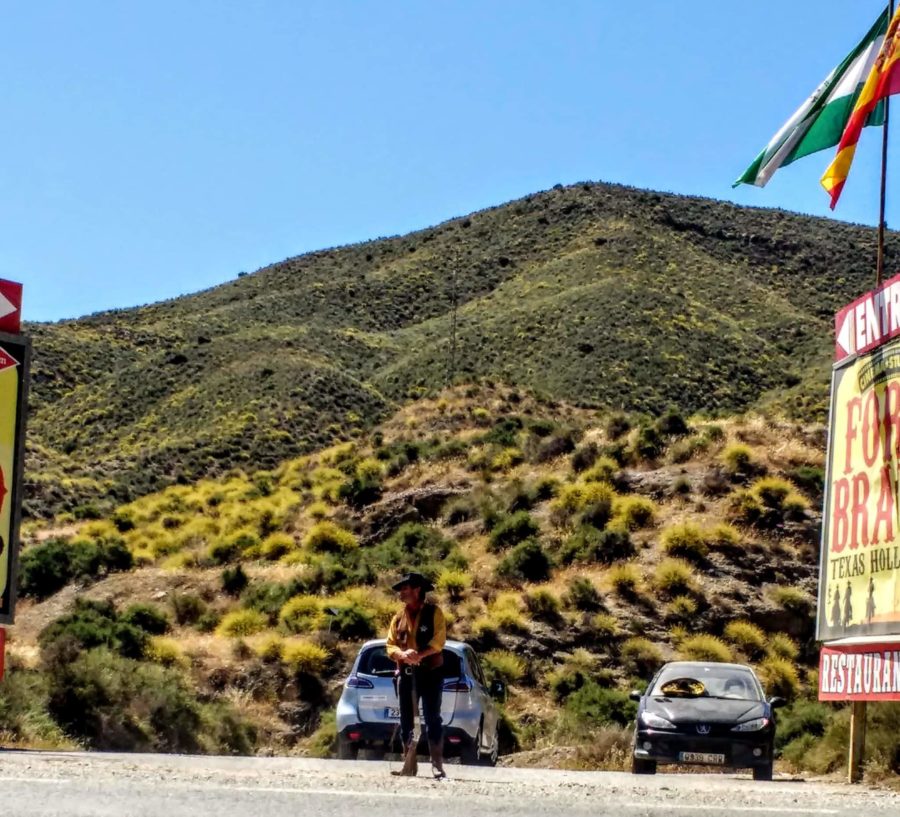
One location is today known as Fort Bravo which is the oldest of the 14 western villages that were built in the Tabernas desert for Hollywood. It is still used today and has become a favourite place for tourists to visit.
Fort Bravo
Fort Bravo is tucked into a dry valley by a canyon and is a rough ride into the village. There is parking by the gates and you enter the village to be regaled with cowboy legends, dancing saloon girls, shots of whiskey and gunfights.

Tips for Visiting the Western village of Fort Bravo
The “shows” are pretty cheesy and you can join in if you wish. They are directed and acted by local drama students and folks who find work at the Fort during the tourist season. They are in Spanish and very few people who work here speak English.
The shows take place in the saloon amongst the old wooden tables, or at the bar ordering a whiskey, and they are part and parcel of visiting Fort Bravo and getting into the spirit of the old westerns.
When to visit Fort Bravo
I would suggest visiting during your winter holidays the heat in the summer months can be exceptionally hot and don’t make for a great visit. Fort Bravo also offers horse riding, and riding tours are organized through the desert. This should be arranged by phone before visiting.

You can get a drink at any time in the movie village saloon or you can buy something to eat and drink in the restaurant. Outside the village, the closest restaurants are back in the town of Tabernas, around 2 km away. The Cost is €19.40 for adults, teens from 12 to 17 are €15,90 and Children: €9,90 (from 5 to 11 years)
Oasys Mini Hollywood
Mini Hollywood is the largest and most expensive of the Tabernas Desert Wild West parks. However, having said that it is a great place for kids and families. There is a good zoo (even though I am not a zoo fan). There are 2 pools, with a restaurant and cafes and your ticket price can include an all-you-can-eat buffet.
The “shows” include gunfights outside, the usual cheesy can girls in the saloon show that you can join in if you want. Again most of this is in Spanish but it is done with a light heart and lots of fun. Cost for adults without buffet is € 22,90 teens € 13,60 children and seniors € 18,80 and respectively with the buffet € 34,60 € 21,80 and € 30,50

Western Leone
This is the third Western “set” in the Tabernas Desert and probably the most authentic (although a bit old and rundown now) and the one that was used by Sergio Leone for his spaghetti Westerns. It is the smallest and cheapest of the 3 parks at a cost of €10 per adult. There are the usual “wild west shows” in Spanish and a saloon bar and restaurant.
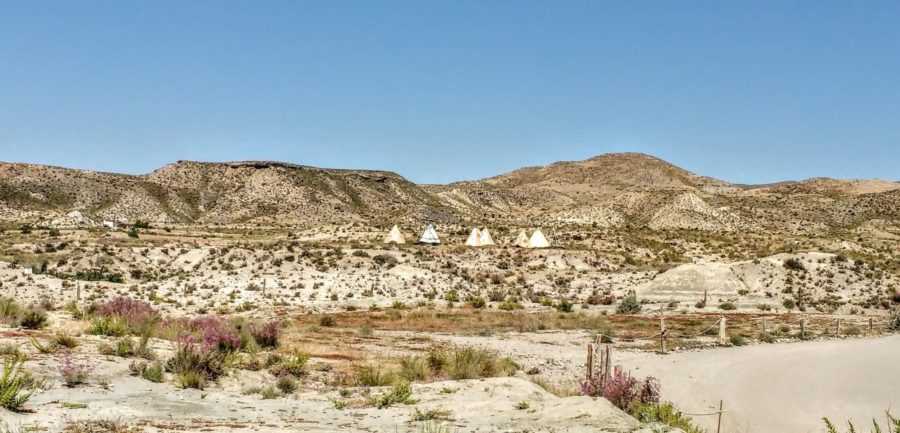
You can just catch a glimpse of the tee-pees from the A-92. The set was originally built to film Once Upon a Time in the West featuring Henry Fonda and Charles Bronson and you may recognize the desert town of Sweetwater and the McBain ranch.
Famous Movies filmed in the Tabernas Desert
The Desert has been used for many locations by Hollywood as well as TV shows. The first movie filmed here was probably Lawrence of Arabia with Peter O’Toole which started the ball rolling for future Hollywood epics.

The Last Crusade an Indiana Jones movie was filmed in Almeria with the Tabernas Desert standing in for the battle against the Nazis at Petra.

Exodus of Gods and Kings, Ridley Scott’s epic movie about the migration of the Jews from Egypt was filmed here in the Tabernas Desert. In fact, the olive orchards at the Castillo Tabernas olive mill were used in some of the battle scenes and the Mill has immortalized the olive tree that was set fire to in the movie just outside the mill.

My personal favourite Game of Thrones also used the Tabernas Desert to film for the HBO series. The Desert became the Dothraki sea and many action sequences were filmed in the Rambla del Cautivo. The crew also used a marble quarry Karst en Yesos de Sorbas for filming and the desert represented Essos the huge steppe, the largest continent in the make-believe world created by writer George R. R. Martin.
What else is there to see in the Tabernas Desert?
Tabernas village and castle
On the edge of a ravine at the foot of the Alhamilla mountains is the Tabernas Village which was originally a resting place for Roman troops. Over the years many armies stopped here and because of this, a selection of taverns was built to satiate the soldiers’ thirst. It is this that gives Tabernas its name.
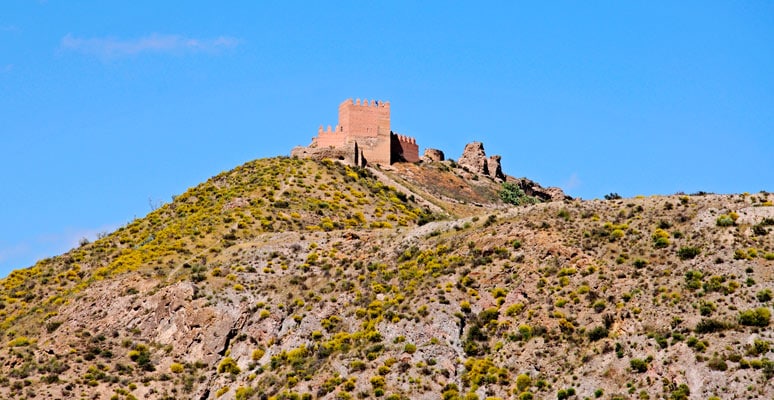
Taberna’s castle sits on the hilltop above the village and can be seen for miles around. The Castle dates back to the 11th century and is built in what has become known as the Nazari style. It is obviously in ruins but makes a great place to get panoramic views of the desert. Local legend says that it was here at Tabernas Castle that the last Moorish King surrendered to the Catholic King and Queen, Fernando and Isobel.
The Solar Platform of Almeria
When we first drove by this massive solar farm we were taken aback by the size of the place. The Tabernas desert being so large and dry is the perfect place to harvest the sun’s energy for solar power. the solar farm is the largest in Europe and it even has a visitors centre that will take you on a tour if you pre-book they can provide you with English-speaking guides.
Tabernas – Racing circuit
The Almeria racing circuit is situated beside the N-340a highway a few kilometres from Tabernas village. This fast and exhilarating circuit welcomes both cars and bikes, the 4.2km track is well laid out with 14 corners and a straight run of 900m, the circuit also places much emphasis on safety with large run-off areas.
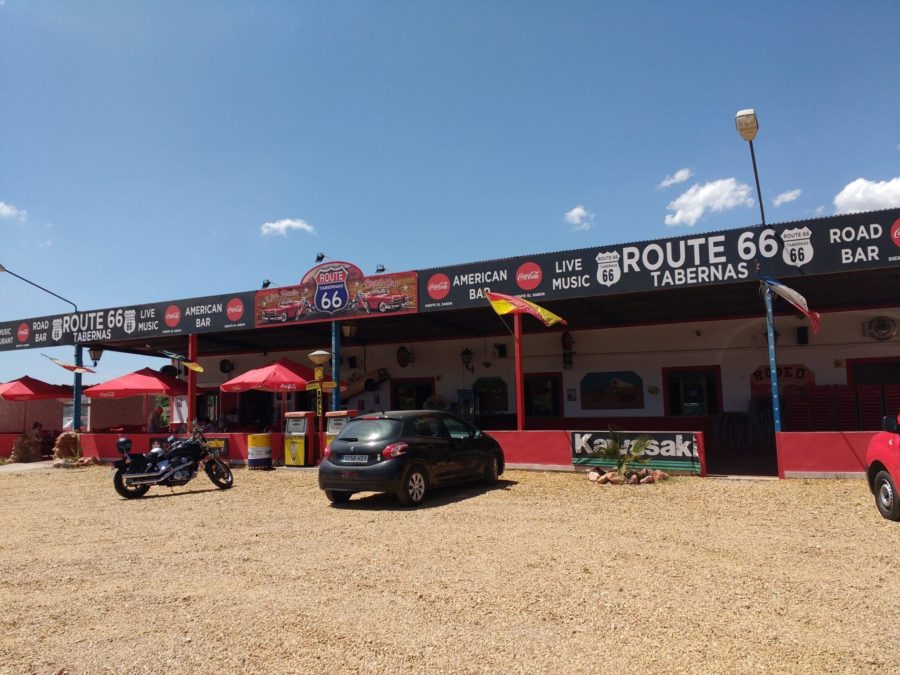
Professionals say that the “Almeria race circuit has a 4.3km track which was designed with MotoGP and F1 testing in mind. This is a technical circuit with 14 corners some of which have double and even triple apexes. A long 900m back straight gives you a chance to stretch the legs of your machine and is located in the driest part of Spain, up in the hills, making a fantastic backdrop for your photographs.”
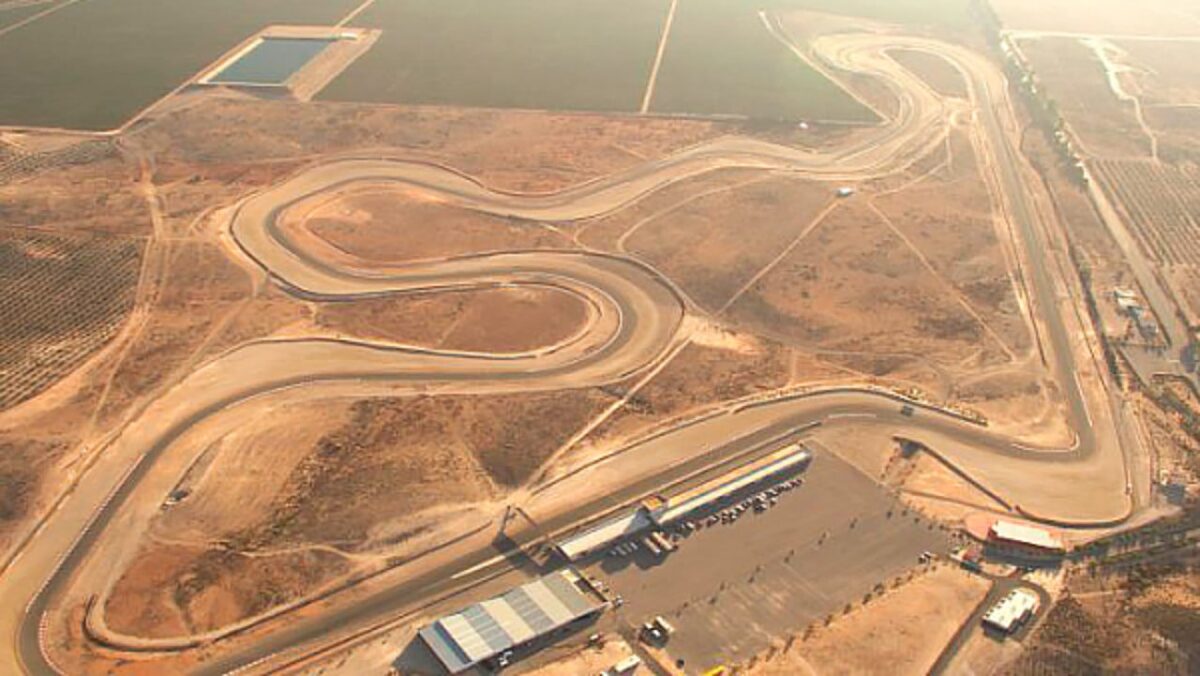
The viewing area, situated above the pits, extends to over 200 metres making it possible to see almost the entire circuit give or take a corner or two. Away from the pit area the onsite bar and restaurant also provide generous views of the course.
Tabernas Desert – Olive oil
Desert d’Almeria has the perfect climate for producing amazing Olive Oils. Temperatures are stable throughout the growing period and this makes for olives that are low in acidity.
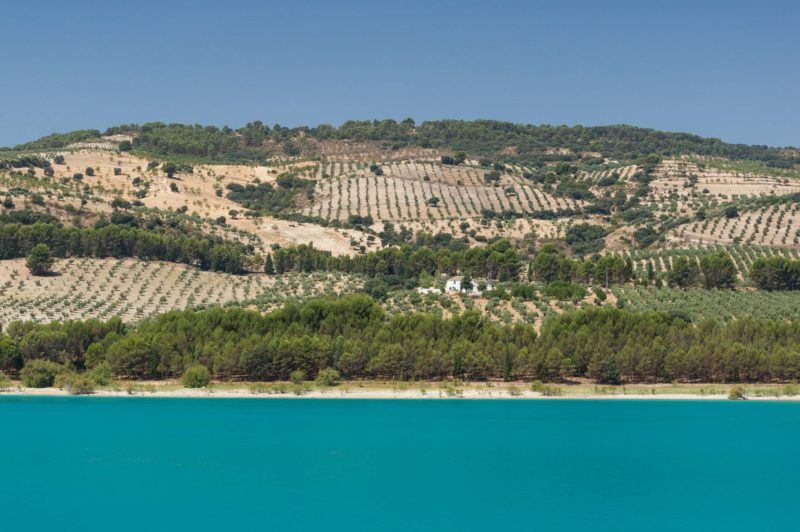
There are two Olive Oil Mills that can be visited in the Tabernas Desert. We chose to visit the Almazara Castillo de Tabernas.
Almazara Castillo de Tabernas
This farm and mill is one of the largest international producers of extra virgin olive oil, and it covers an area of approximately 470 acres and has more than 90,000 olive trees. It was also the place of filming for Ridley Scott’s Exodus.
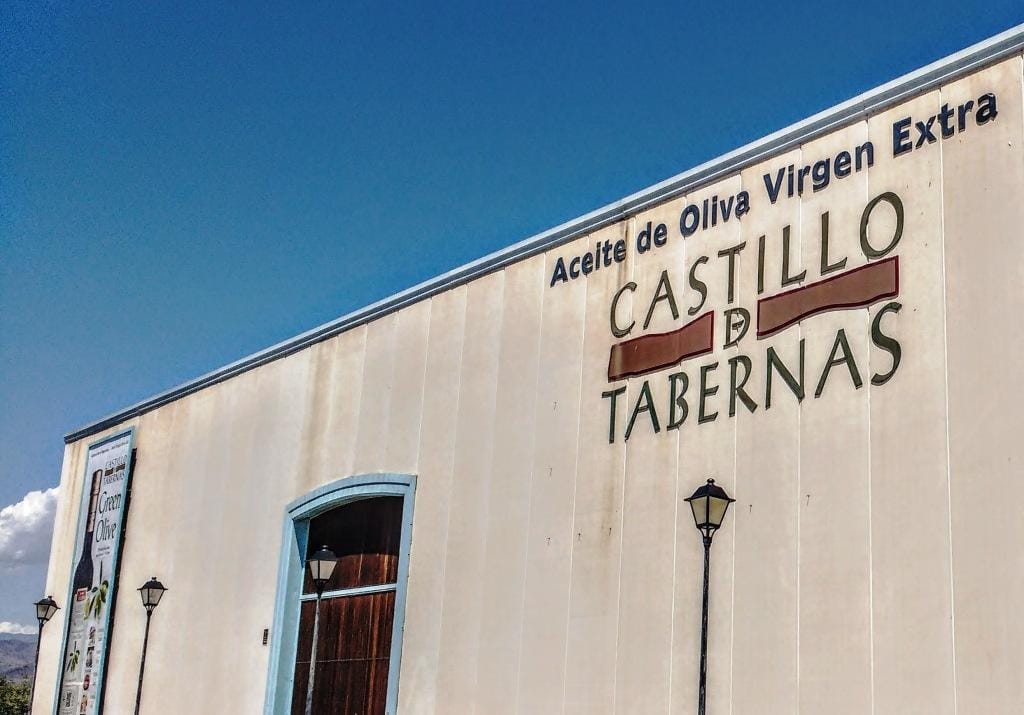
The Mill offers guided tours in English and guess what? They are absolutely free and totally fascinating. You can also taste and buy the olive oils produced here. This is an ecologically friendly mill and the olives are harvested and cold-processed within 8 hours of being picked.
Almazara Museo – Los Albardinales
Olive farm and mill – museum – deli shop – restaurant: El Oro del Desierto translates as the gold of the desert and is the brand name for the range of olive oil produced by this family-run farm and business. The Mill has a museum, a deli shop and a lovely restaurant. They farm organic extra virgin olive oil using ecologically friendly systems that use natural resources.
With 25,000 olive trees, they pride themselves on their organic extra virgin olive oil farmed using an ecologically friendly system that only uses natural resources.
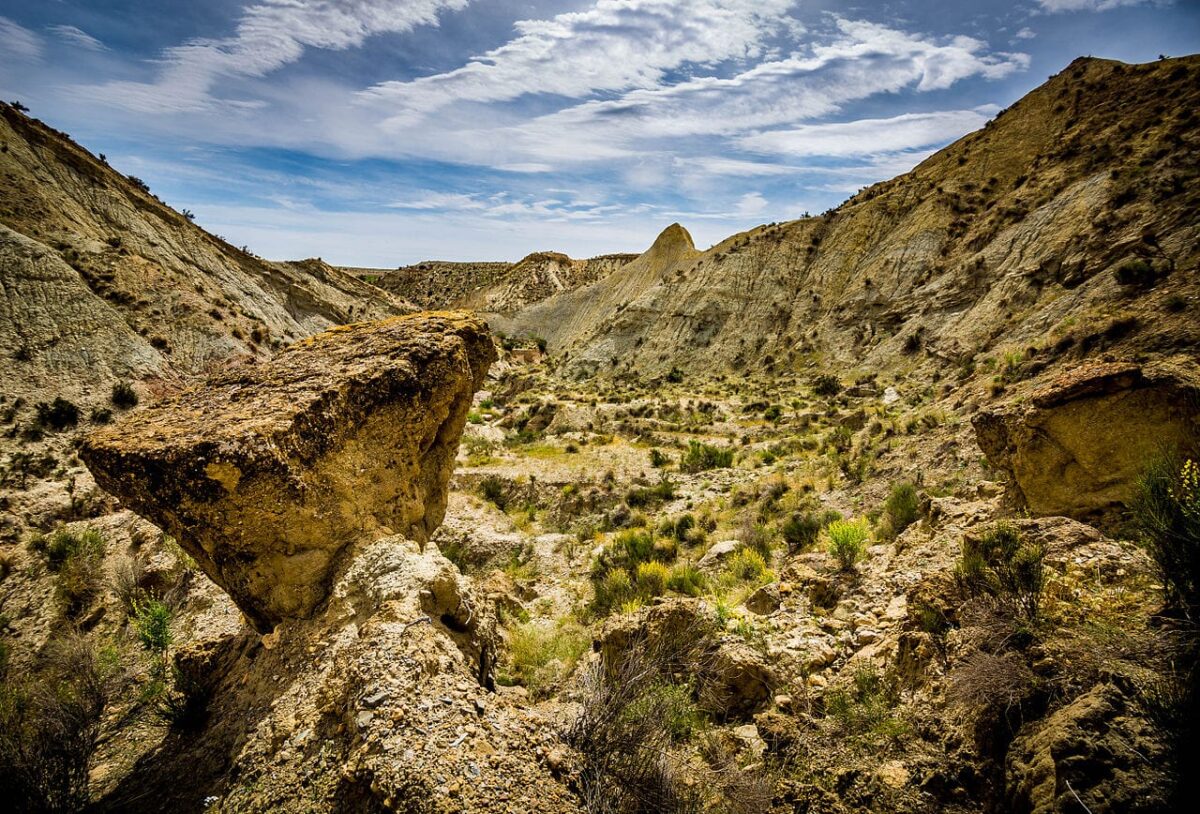
As you plainly see a Desert like the Tabernas Desert holds a multitude of things to see and do and is well worth exploring when you visit Almeria province.
You might also like
Ultimate Southern Spain Road Trip
23 Unique things to do in Cartagena Spain
Mojácar Spain: the perfect guide to this charming village
Fabulous holidays on the Costa Almeria Spain



